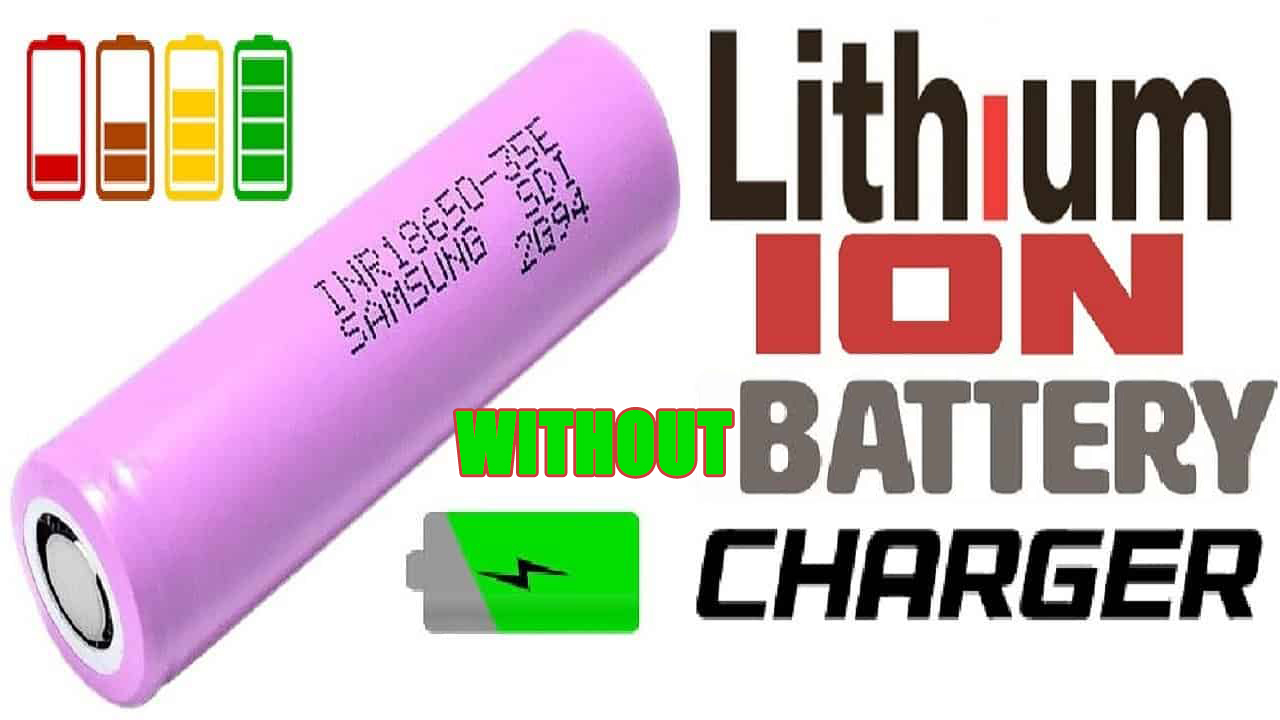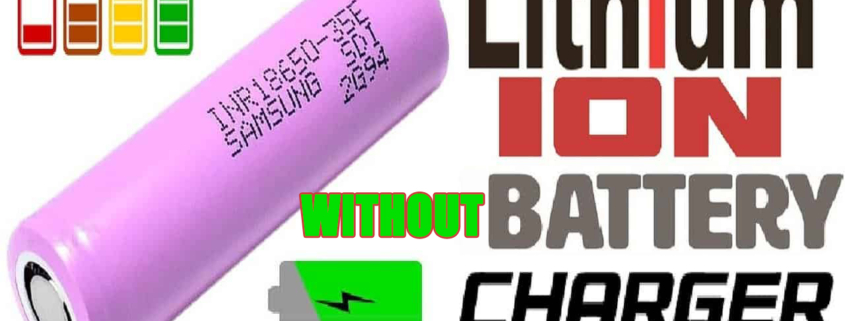How to charge lithium ion battery without charger?
Ever found yourself in a situation where your device’s lithium-ion battery is running low, but you don’t have the charger with you? Fear not! There are alternative methods to charge your battery without using its designated charger. This article will explore various ways to charge lithium-ion batteries without a charger, discuss safety precautions and answer some frequently asked questions.

Understanding Lithium-Ion Batteries
Structure and Function
Rechargeable lithium-ion batteries are used in electrical products like electric cars, computers, and cell phones. A positive electrode (cathode), a negative electrode (anode), and an electrolyte comprise their three major parts. Lithium ions travel between the electrodes during filling and draining, allowing the battery to store and discharge energy.
Charging Process
You apply a voltage to charge a lithium-ion battery, forcing lithium ions to move from the cathode to the anode. A built-in charging circuit typically controls this process, ensuring efficient and safe charging of the battery.
How to charge lithium ion battery without charger?
Universal Charging Method
A universal charger allows you to charge a lithium-ion battery without needing a specific charger. These chargers feature adjustable voltage settings and multiple connectors, enabling them to charge different types of batteries. Ensure you match your battery’s voltage and connector type before charging.
Using a Power Bank
You can also use a power bank to charge a lithium-ion battery. Connect your device to the power bank using the appropriate cable and observe your battery charging. Remember that not all power banks are compatible with every device, so check compatibility before using this method.
Charging with a Solar Panel
A solar panel can be a green method to charge a lithium-ion battery for those who enjoy being outside. The energy produced by solar chargers can be used to power your device. Follow the manufacturer’s directions for the best recharge and ensure the sun charger suits your battery.
DIY Charging Methods
Although not recommended for everyone, some DIY methods can charge a lithium-ion battery without a charger. Individuals with a solid understanding of electronics and safety precautions should only attempt these methods.
Using a USB Cable and Resistor
- Cut the USB cable and strip the ends to expose the red (positive) and black (negative) wires.
- Attach a resistor to the red wire to regulate the charging current.
- Connect the red wire to the battery’s positive terminal and the black wire to the negative terminal. 4. Plug the USB cable into a USB power source, such as a computer or wall adapter.
Using a 9V Battery and a Resistor
- Attach a resistor to the positive terminal of the 9V battery to regulate the charging current.
- Attach the positive terminal of the 9V battery to the positive terminal of the lithium-ion battery to connect the batteries.
- Connect the negative terminal of the 9V battery to the negative terminal of the lithium-ion battery.
- Monitor the charging process closely and disconnect the batteries once the lithium-ion battery is fully charged.
Safety Tips and Precautions
Charging Precautions
- Always charge lithium-ion batteries within the recommended voltage and current limits.
- Do not leave a battery charging unattended, especially when using DIY methods.
- During charging, keep an eye on the battery’s temperature. If it becomes overly heated, turn off the electricity instantly.
- It is important to avoid charging a damaged or swollen battery to prevent dangerous situations.
Battery Storage
- Keep lithium-ion batteries in a cool, dry place away from direct sunlight and heat sources when storing them.
- Do not store batteries in areas with high humidity or extreme temperatures to prevent damage.
- Keep batteries away from metal objects to prevent short-circuiting.
Conclusion
Charging a lithium-ion battery without a charger is possible through various methods, such as using a universal charger, power bank, solar panel, or DIY techniques. However, following safety precautions and ensuring compatibility between the charging method and your battery is crucial. Doing so lets you keep your devices up even when the designated charger is unavailable.
FAQs
- Can I charge my lithium-ion battery with a charger for a different battery type?
A charger intended for a different battery type is not suggested because it may not meet your lithium-ion battery’s voltage and current needs, resulting in possible damage or hazardous circumstances.
- How do I know when my lithium-ion battery is fully charged without a charger?
A voltmeter can be used to determine the voltage of the battery. The battery should reach its rated voltage (usually printed on it) to indicate that it is completely charged. However, choosing a good charger with built-in circuits is always advisable.
3. Can I charge a lithium-ion battery with a car charger?
Before charging, ensure that the vehicle adapter intended to charge lithium-ion batteries suits your battery’s voltage and current needs.








